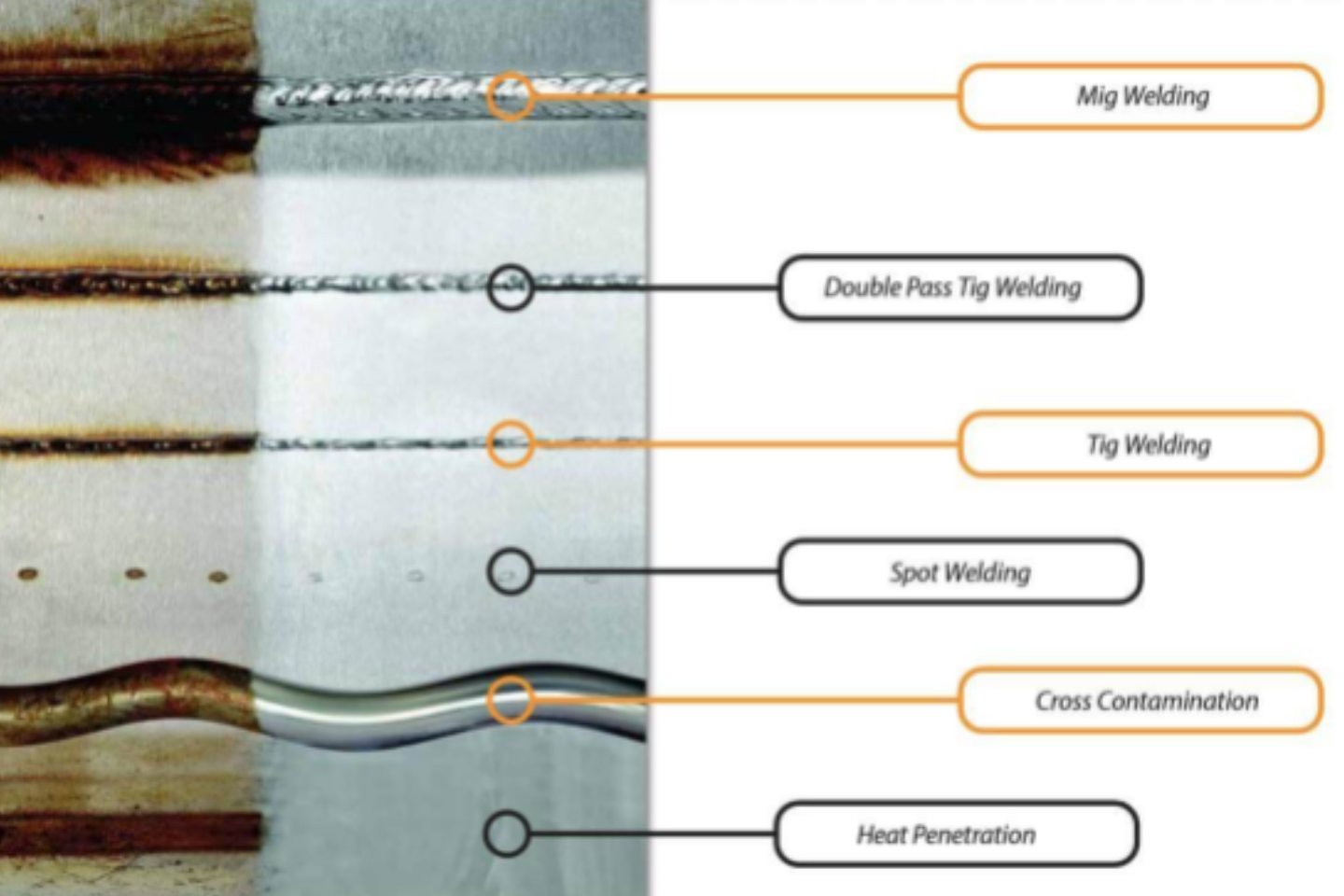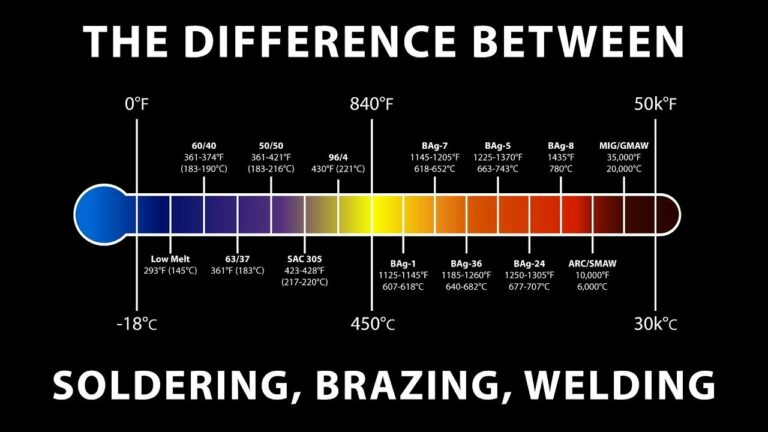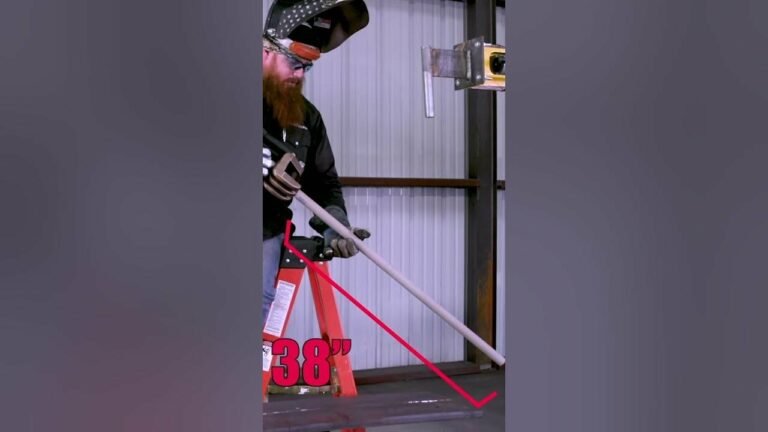Tig Welding Issues: Troubleshooting Tips And Solutions
TIG welding issues? Don’t worry, we’ve got you covered. Whether you’re a seasoned welder or just starting out, encountering challenges in TIG welding is something that happens to the best of us. From inconsistent weld beads to electrode contamination, these issues can be frustrating and time-consuming. But fear not, as we dive into the world of TIG welding problems, we’ll explore practical tips and solutions that will help you overcome these obstacles with confidence. So, grab your welding helmet and let’s tackle these TIG welding issues head-on.
TIG Welding Issues
Introduction
TIG welding, also known as Gas Tungsten Arc Welding (GTAW), is a popular welding process due to its versatility and precision. However, like any welding method, TIG welding comes with its own set of challenges and issues. In this article, we will explore the common problems faced during TIG welding and discuss the possible solutions. Whether you are a beginner or an experienced welder, understanding these issues will help you achieve better results and overcome any obstacles in your TIG welding projects.
1. Poor Weld Penetration
Achieving proper weld penetration is crucial for the strength and longevity of the weld joint. Insufficient penetration can lead to weak welds that are prone to failure. Some common causes of poor weld penetration in TIG welding include:
Inadequate arc length:
Maintaining the correct arc length is essential for achieving proper weld penetration. If the arc length is too long, the heat dissipates, resulting in inadequate penetration. On the other hand, if the arc length is too short, it can cause the tungsten electrode to become contaminated, leading to unstable arcs and insufficient penetration. Proper torch manipulation and maintaining the correct arc length can help overcome this issue.
Insufficient amperage:
In TIG welding, the amperage setting plays a crucial role in determining the weld penetration. If the amperage is set too low, it will result in poor penetration. Increasing the amperage within the appropriate range can improve weld penetration.
Inadequate preparation:
Before starting the welding process, proper preparation of the joint is essential. Inadequate cleaning of the base metal or improper beveling can interfere with the weld penetration. Ensure that the surfaces are clean, free from contaminants, and properly prepared to promote better weld penetration.
2. Tungsten Electrode Contamination
The tungsten electrode used in TIG welding is susceptible to contamination, which can affect the quality of the weld. Common sources of tungsten electrode contamination include:
Touching the filler rod to the tungsten electrode:
When the filler rod comes into contact with the tungsten electrode, it can cause contamination. This leads to unstable arcs, poor weld quality, and potential defects. Keeping the filler rod separate from the tungsten electrode during welding will help prevent contamination.
Improper gas shielding:
TIG welding requires an inert gas, typically argon, for shielding the weld from atmospheric contamination. Insufficient gas flow or gaps in the gas coverage can lead to contamination of the tungsten electrode. Ensuring proper gas shielding and adequate gas flow rate is crucial to prevent electrode contamination.
Dirty or oil-contaminated workpiece:
The base metal should be clean and free from any dirt, oil, or other contaminants. These impurities can transfer onto the tungsten electrode during welding, resulting in contamination. Thoroughly cleaning the workpiece before welding can help prevent electrode contamination.
3. Porosity in Welds
Porosity refers to the presence of small gas pockets or voids within the weld, which can weaken the joint. Several factors contribute to porosity in TIG welding, including:
Contaminated filler metal:
Using contaminated filler metal or storing it improperly can introduce impurities into the weld. These impurities can cause gas pockets and result in porosity. Proper handling and storage of filler metal, as well as using clean and quality materials, can help reduce porosity.
Insufficient gas shielding:
Inadequate gas shielding during TIG welding can expose the weld pool to atmospheric contamination, leading to porosity. Ensuring proper gas coverage and adequate gas flow rate will minimize the risk of porosity.
Dirty workpiece surface:
When welding on a surface that is not properly cleaned, dirt, rust, or other contaminants can vaporize and create gas pockets within the weld. Thoroughly cleaning the workpiece before welding will help eliminate this source of porosity.
4. Cracking of Welds
Cracking of welds can occur due to various reasons, and TIG welding is no exception. Some common causes of weld cracking in TIG welding are:
Inadequate preheating or post-weld heat treatment:
Certain materials, especially those prone to cracking, require preheating or post-weld heat treatment to relieve residual stresses. Failing to follow the recommended preheating or heat treatment procedures can result in weld cracking. It is essential to understand the material properties and follow the appropriate pre- and post-weld procedures.
Excessive heat input:
Applying excessive heat input to the weld joint can cause rapid cooling and subsequent cracking. It is crucial to control the heat input by adjusting the welding parameters, such as amperage and travel speed, to minimize the risk of cracking.
Poor joint design:
Inadequate joint design can lead to stress concentration areas, making the weld prone to cracking. Ensuring proper joint preparation, appropriate weld sizes and profiles, and suitable reinforcement can help minimize the risk of cracking.
5. Inconsistent Weld Bead Appearance
The appearance of the weld bead is not only an aesthetic consideration but also an indication of the weld quality and integrity. Inconsistent weld bead appearance can result from various factors, including:
Inconsistent travel speed:
Maintaining a consistent travel speed during TIG welding is crucial for achieving a uniform weld bead appearance. Inconsistent travel speed can lead to variations in heat input, resulting in uneven bead appearance.
Incorrect electrode angle:
The angle at which the tungsten electrode is held during welding affects the weld bead shape and appearance. Incorrect electrode angles can cause irregular bead formations. Maintaining the appropriate electrode angle will help achieve consistent weld bead appearance.
Improper shielding gas flow:
Inadequate gas flow or interruptions in gas coverage can affect the shielding effectiveness, leading to inconsistent bead appearance. Verifying and adjusting the gas flow rate as necessary will help ensure consistent weld bead appearance.
6. Difficulty in Welding Thin Materials
Welding thin materials can present unique challenges in TIG welding. Some issues commonly encountered when welding thin materials include:
Heat distortion:
Thin materials are more susceptible to heat distortion due to their limited thermal capacity. Rapid heating and cooling can cause warping or buckling of the material. Using proper fixturing, preheating techniques, and avoiding excessive heat input can help minimize heat distortion.
Burn-through:
Applying excessive heat or improper welding techniques can result in burn-through, where the weld creates a hole in the thin material. Using lower amperage, pulsing techniques, or employing backing bars or filler material can help prevent burn-through in thin materials.
Difficulty in maintaining stability:
Welding thin materials requires steady hands and precise control to maintain a stable arc and achieve consistent welds. Using techniques such as resting the hand on a support or using TIG finger heat shields can help improve stability during welding.
TIG welding is a versatile and precise welding process, but it does come with its share of challenges. By understanding and addressing common TIG welding issues like poor weld penetration, tungsten electrode contamination, porosity, weld cracking, inconsistent weld bead appearance, and welding thin materials, you can improve the quality and reliability of your TIG welds. Remember to adjust welding parameters, maintain proper cleanliness, follow appropriate procedures, and practice good technique to overcome these challenges. With practice and experience, you will enhance your TIG welding skills and achieve excellent results in your projects.
TFS: Top 10 Mistakes Beginner TIG Welders Make
Frequently Asked Questions
What are the common issues in TIG welding?
Common issues in TIG welding include insufficient heat, overheating, tungsten contamination, poor weld penetration, and gas leakage.
How can I fix insufficient heat while TIG welding?
To fix insufficient heat, you can increase the welding current, reduce the travel speed, use a lower welding speed, or ensure proper gas flow to maintain shielding.
What causes overheating in TIG welding and how can it be resolved?
Overheating in TIG welding can be caused by excessive current or slow travel speed. To resolve it, you can reduce the welding current, increase travel speed, or use a more suitable electrode size to handle the heat better.
What can lead to tungsten contamination in TIG welding and how to prevent it?
Tungsten contamination in TIG welding can occur due to improper grinding, dirty filler rods, or touching the tungsten to the molten weld pool. To prevent contamination, ensure proper electrode sharpening, use clean filler rods, and avoid contact between the tungsten and the weld pool.
How can poor weld penetration be addressed in TIG welding?
Poor weld penetration in TIG welding can be addressed by increasing the welding current, adjusting the torch angle, or using a larger electrode size to improve heat transfer to the base material.
What causes gas leakage during TIG welding and how to fix it?
Gas leakage in TIG welding can be caused by loose fittings, damaged hoses, or faulty gas regulators. To fix it, ensure all connections are tight, inspect hoses for damage, and replace faulty components as needed.
Final Thoughts
In conclusion, tig welding issues can pose significant challenges for welders. From inconsistent arc starts and feed problems to gas leaks and tungsten contamination, these issues can result in poor weld quality and decreased productivity. It is crucial for welders to identify and address these issues promptly to ensure optimal performance and reliable welds. By staying vigilant and implementing proper techniques and equipment maintenance, welders can minimize tig welding issues and achieve high-quality results.


